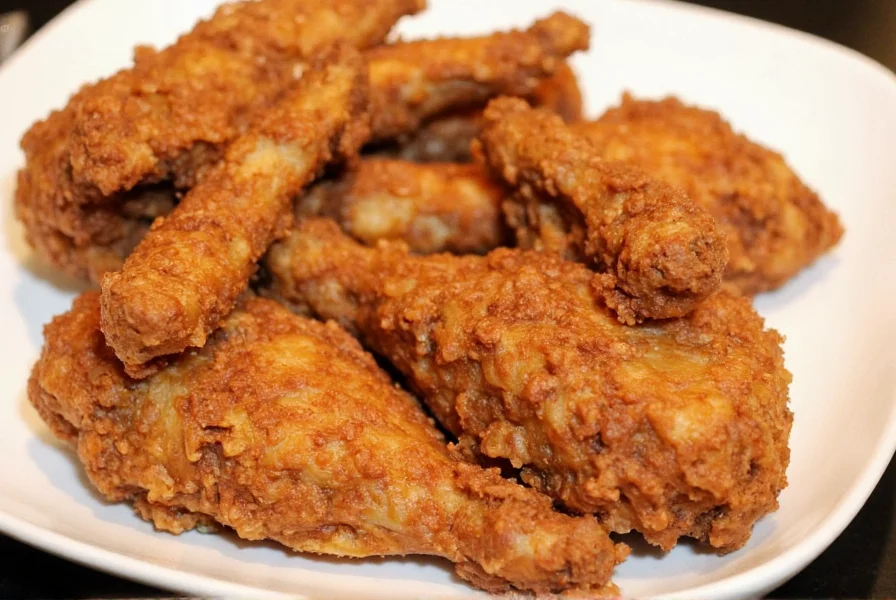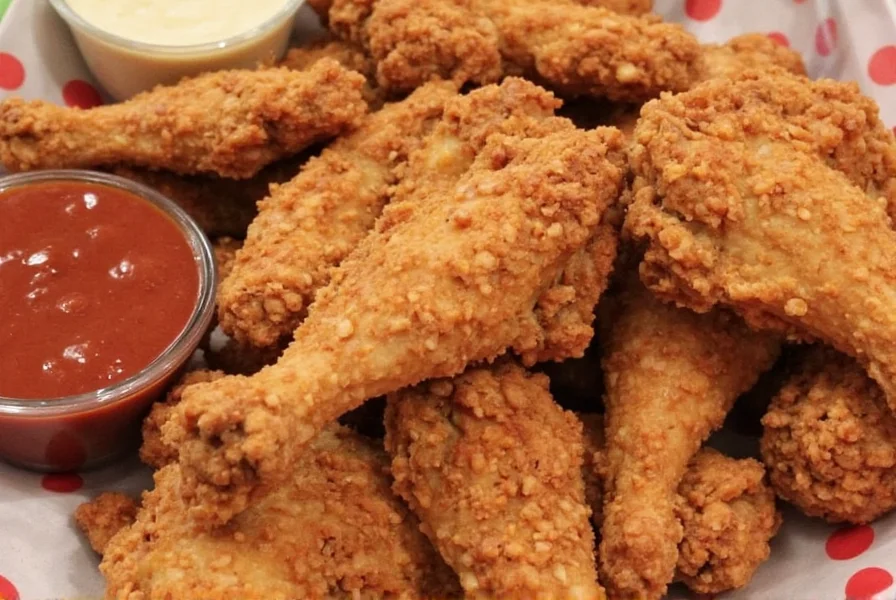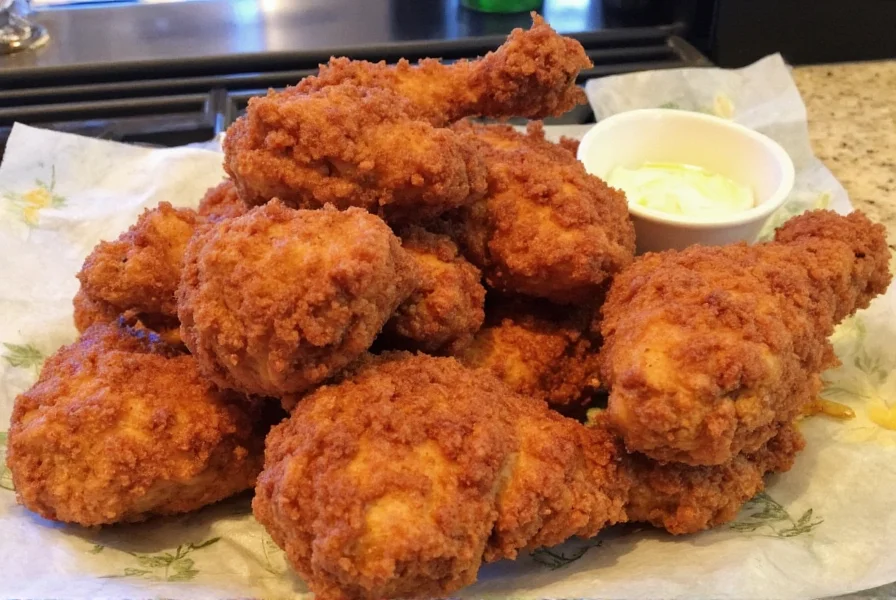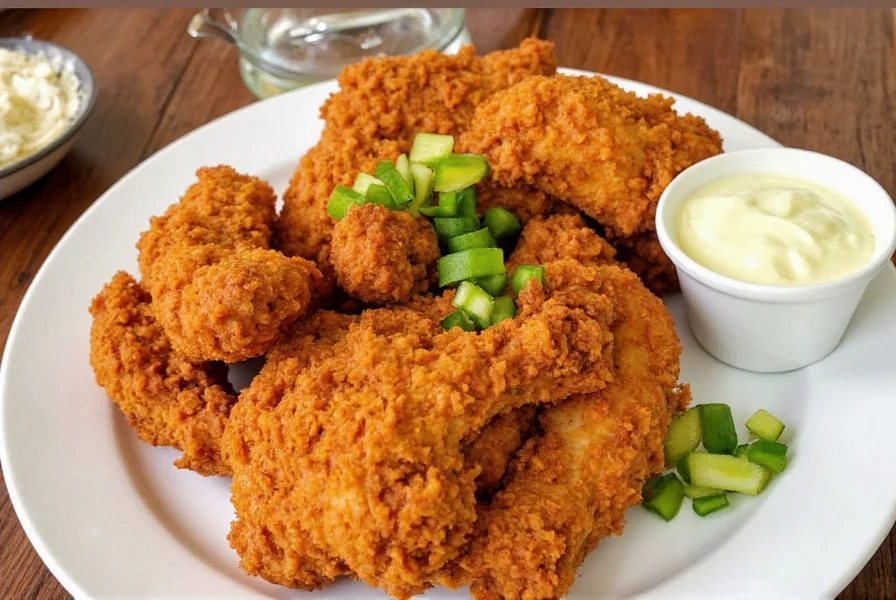Spice Up Your Fryer: The Cajun Fried Chicken Chronicles
If you’ve ever tasted a piece of cajun fried chicken, you know it’s not just food—it’s an experience. With its bold spices, crispy crust, and mouthwatering aroma, this dish is a culinary masterpiece born from the heart of Louisiana. Whether you're a home cook looking to level up your frying game or a seasoned chef curious about regional spice traditions, this guide will take you on a flavorful journey through the world of cajun fried chicken.
Table of Contents
- What Is Cajun Fried Chicken?
- History and Heritage
- The Spice Blend That Makes It
- Cooking Methods Comparison
- Top 5 Tips for Perfect Cajun Fried Chicken
- Buying Guide
- Conclusion
What Is Cajun Fried Chicken?
Cajun fried chicken is more than just a spicier version of traditional fried chicken. It's a signature dish rooted in Southern cuisine that relies on a specific blend of spices—think paprika, garlic powder, onion powder, black pepper, oregano, thyme, and cayenne—to create a uniquely robust flavor profile.

Unlike regular fried chicken, which often emphasizes salt and herbs like rosemary or sage, Cajun chicken leans into earthy, smoky, and slightly spicy notes. It's not always fiery hot, but it's never subtle either.
History and Heritage
The origins of Cajun fried chicken trace back to the French-speaking Acadians who settled in Louisiana after being exiled from Canada in the 18th century. Over time, their cooking evolved by incorporating local ingredients and techniques influenced by Spanish, African, and Native American cuisines.
In this melting pot of flavors, the use of bold spices became essential—not only for taste, but also as a means to preserve meat before refrigeration was common. Today, Cajun fried chicken is a proud symbol of Louisiana culture and a staple at family dinners, festivals, and roadside diners across the South.
The Spice Blend That Makes It
At the core of any good Cajun fried chicken recipe is the spice mix. Here's a basic breakdown of what makes the magic happen:
| Spice | Purpose | Taste Profile |
|---|---|---|
| Paprika | Adds color and mild sweetness | Sweet, Smoky |
| Garlic Powder | Deep savory base | Pungent, Umami |
| Onion Powder | Enhances depth and savoriness | Savory, Sweet |
| Black Pepper | Kicks up heat subtly | Earthy, Sharp |
| Oregano & Thyme | Herbal backbone | Floral, Earthy |
| Cayenne Pepper | Heat source (adjustable) | Fiery, Spicy |

Cooking Methods Comparison
There are several ways to fry chicken, each offering a unique texture and convenience level. Below is a handy comparison chart to help you decide which method works best for your next batch of Cajun fried chicken:
| Method | Pros | Cons | Best For |
|---|---|---|---|
| Traditional Deep Fry | Crispy texture, fast cooking | Messy, oil-heavy | Classicists and big batches |
| Air Fryer | Healthier, less oil | Can dry out if overcooked | Small families, health-conscious cooks |
| Oven Bake | Hands-off, easy cleanup | Less crisp, longer cook time | Weeknight meals, multitaskers |
| Cast Iron Skillet | Even heat, crispy crust | Requires skill and attention | Homesick Southerners |

Top 5 Tips for Perfect Cajun Fried Chicken
- Use Buttermilk Soak: Marinating chicken in buttermilk tenderizes the meat and allows the spices to penetrate deeper.
- Double Coat with Flour and Cornstarch: This combo creates a lighter, crunchier crust than flour alone.
- Fry at the Right Temperature: Keep your oil between 325°F–350°F. Too hot and the outside burns; too cool and it turns soggy.
- Rest Before Serving: Letting the chicken rest for 5–10 minutes keeps the juices locked inside.
- Season Generously: Don’t be shy with the spices! Cajun food is all about boldness.

Buying Guide
Whether you're shopping for pre-made spice blends or planning to make your own, knowing what to look for can save you time and enhance your results. Here’s a curated list of recommended products:
| Product | Description | Features | Best For | Occasion |
|---|---|---|---|---|
| Cajun Gold All-Purpose Seasoning | A versatile, balanced blend with medium heat | No MSG, gluten-free, vegan | Everyday cooking, beginners | Family dinners, quick weeknight meals |
| Zatarain’s Creole Seasoning | Slightly milder than Cajun, great for kids or sensitive palates | Contains salt, ready-to-use | Beginners, picky eaters | Crowd-friendly gatherings |
| Slap Ya Mama Original Blend | One of the most iconic Cajun seasonings | Spicy, smoky, no fillers | Experienced cooks, spice lovers | Festival-level feasts, backyard parties |
| McCormick Cajun Seasoning | Mild and convenient | Easily found in supermarkets | Those new to Cajun flavors | Trying the style for the first time |
| DIY Cajun Spice Mix Kit | All-natural spices to customize your blend | Customizable heat and flavor levels | Foodies, advanced chefs | Gifts, personal experimentation |

Conclusion
Cajun fried chicken is more than just a meal—it’s a celebration of spice, tradition, and soulful Southern cooking. Whether you're deep-frying in a cast iron skillet or air-frying for a lighter twist, mastering this dish opens the door to a world of bold flavors and cultural richness.
From choosing the right seasoning blend to perfecting your frying technique, every step plays a role in creating that golden, crunchy crust and rich, aromatic bite. And now that you’ve got the tools, tips, and taste buds ready, it’s time to fire up the fryer and bring a little Louisiana love into your kitchen.
So go ahead, grab your spices, coat that chicken, and let the smell of Cajun comfort fill your home. After all, life is better with a little kick!












 浙公网安备
33010002000092号
浙公网安备
33010002000092号 浙B2-20120091-4
浙B2-20120091-4